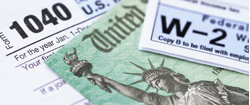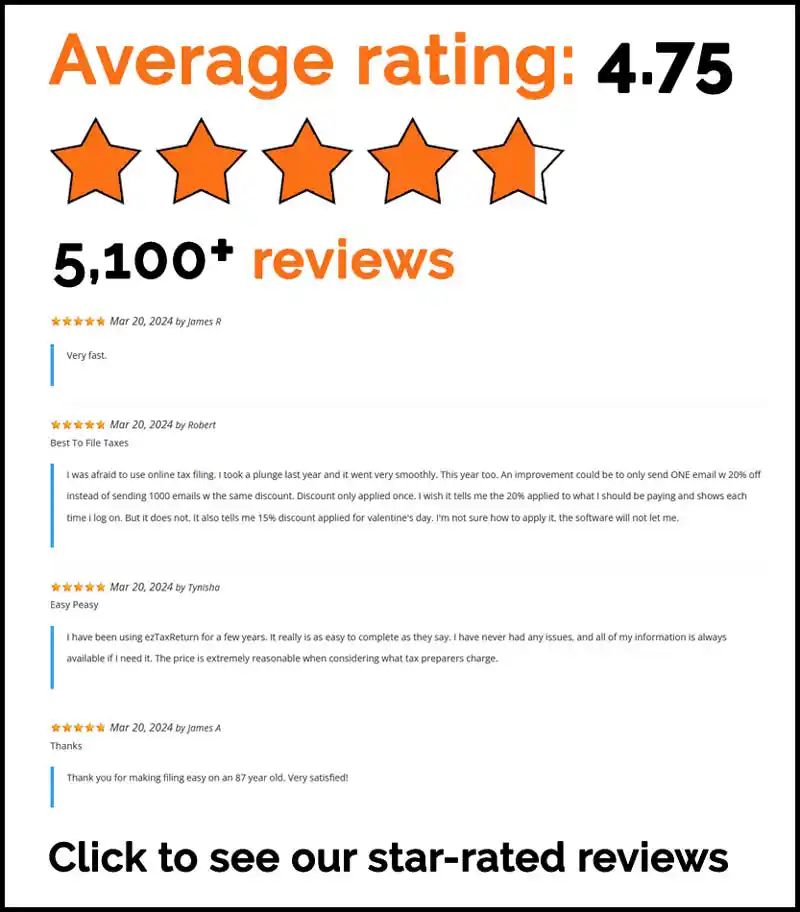The information in this article is up to date for tax year 2024 (returns filed in 2025).
Dealing with taxes can be stressful, but making IRS payments doesn’t have to be. Whether you’re paying online, by phone, or through the mail, there are plenty of ways to get it done quickly and easily. We’ll walk you through 7 simple methods to make IRS payments, so you can tackle this task without the hassle.
1. Electronic funds withdrawal (EFW)
When you e-file your taxes using tax software, or through the IRS Free File, you can choose to have the funds automatically withdrawn from your bank account at no cost. It’s one of the most popular payment options because there are no checks to write or mailing addresses to remember.
Simply choose a date between now and April 15th and e-file as usual. Once your return has been accepted, the payment will be deducted on the date you selected. Keep in mind that if the date falls on the weekend or a holiday, your payment will be withdrawn on the next business day.
Pros:
- Free (unless your bank has associated fees)
- Good for both annual taxes and estimated taxes
- Easy to schedule payment ahead of time
2. Check or Money Order
The IRS accepts both checks and money orders for tax payments.
What you’ll need to include:
- Name
- Address
- Daytime phone number
- Social Security Number or employer identification number
- Tax year
- Completed IRS Form 1040-V
If you e-file through ezTaxReturn, a Form 1040-V payment voucher will be included when you download a copy of your return. You’ll need to mail a copy of your tax return along with the payment voucher to the address that applies to you. Your check or money order must be made payable to “United States Treasury” and postmarked by April 15, 2025 to avoid late penalties.
Pros:
- You don’t need a bank account to pay by money order
- Money orders can’t bounce
- Money orders are trackable
3. IRS Direct Pay
IRS Direct Pay is a free service through the IRS that lets you pay taxes online directly from your bank account. Direct Pay works for paying your annual tax balance, estimated taxes, and installment payments.
To use Direct Pay, you’ll need to verify your identity, provide your tax information and payment details, and provide an electronic signature.
Pros:
- Free to use
- Schedule payments up to 365 days in advance
- Confirm payment through confirmation number or email
- Registration is not required
4. The Electronic Federal Tax Payment System (EFTPS)
Similar to Direct Pay, the Electronic Federal Tax Payment System is a free service of the U.S. Department of the Treasury that allows taxpayers to make payments online or by phone 24/7. EFTPS is available for both individuals and businesses, although it is especially popular for business tax payments since it makes it easy to schedule multiple payments in advance. This makes it a great option for self-employed taxpayers that need to pay quarterly estimated taxes.
To pay through EFTPS, you will need to enroll with your identity and bank information. The IRS will mail you a PIN in about 5-7 days. Use the PIN to log in and create a strong password for the account. From there, you can verify your banking information and start scheduling or making payments.
Pros:
- Free to use
- Three sets of ID make payment through EFTPS more secure (i.e., taxpayer identification number, PIN, password)
- Easily change or cancel scheduled payments
- View 15 months of payment history
- Get help from a live operator 24/7
5. Credit or Debit Card
Credit and debit cards are a convenient way to pay your bills online or over the phone. But if you plan to pay your tax bill using plastic, your debt will be more expensive due to processing fees. The IRS uses third-party payment processors.
- The fee for paying by debit card starts at $2.10
- The processing fee for credit cards starts at 1.75% with a minimum fee around $2.50.
Note: There’s a maximum number of card payments allowed based on your tax type and payment type.
Pros:
- Pay online or over the phone
- Card processing fees are tax deductible for business taxes
- Works with Visa, Mastercard, Discover, American Express, STAR, Pulse, NYCE, Accel, AFFN, Cirrus, Interlink, Jeanie, Shazam, and Maestro
- Can also pay through digital wallets like PayPal
6. Installments
Sometimes a tax bill catches you off guard and you can’t afford to pay it immediately. If you can’t afford to make your full payment by April 15th, you can apply for an installment agreement, which will allow you to make monthly payments. Depending on how much you owe, you may qualify for a short-term payment plan (less than 120 days) or a long-term payment plan (more than 120 days).
There’s no fee to set up a short-term plan, but you will accrue penalties and interest until your debt is paid off. If you’re approved for a long-term plan and pay monthly through automatic withdrawals, the setup fee is $22 plus penalties and interest. For non-direct debit payments, the setup fee is $63 plus interest and penalties.
Pros:
- Most taxpayers qualify
- Easy online sign up
- Can schedule payments automatically
7. Cash
If you prefer to pay in cash, you can deliver payment in person with an IRS cash processing company located at participating retailers or at a local IRS Taxpayer Assistance Center (TAC).
Participating stores include Dollar General, Family Dollar, CVS Pharmacy, Walgreens, Pilot Travel Centers, 7-Eleven, Speedway, Kum & Go, Royal Farms, Go Mart, and Kwik Trip.
Note: Do NOT mail your cash payment to the IRS. Cash payments should be made in person at the participating retail locations or IRS TACs.
Pay at a retail partner:
To pay at a partner location, follow the IRS instructions here. Plan to make your payment at least a week before your tax is due.
Pay at an IRS Taxpayer Assistance Center:
To pay at a TAC, you will need to call 844-545-5640 to schedule an appointment at TAC that accepts cash. Be sure to call 30 to 60 days before the day you want to pay.
Pros:
- Doesn’t require a bank account
- Available in all 50 states
- Free or minimal fees
What Happens If You File Taxes Late?
If you missed the deadline to file and didn’t apply for an extension, it’s important to get your return in as soon as possible. The IRS charges late penalties for failure to file and failure to pay, in addition to interest on penalties.
This year the tax deadline is April 15, 2025. If you need more time to file and pay, you can file Form 4868 to ask for a six-month extension.
Whatever way you decide to pay your taxes, e-filing through tax prep software like ezTaxReturn can help you avoid costly late fees and ensure your payments arrive on time. Even if you can’t pay your taxes on time, filing before the deadline will help reduce your overall penalties.
The articles and content published on this blog are provided for informational purposes only. The information presented is not intended to be, and should not be taken as, legal, financial, or professional advice. Readers are advised to seek appropriate professional guidance and conduct their own due diligence before making any decisions based on the information provided.




